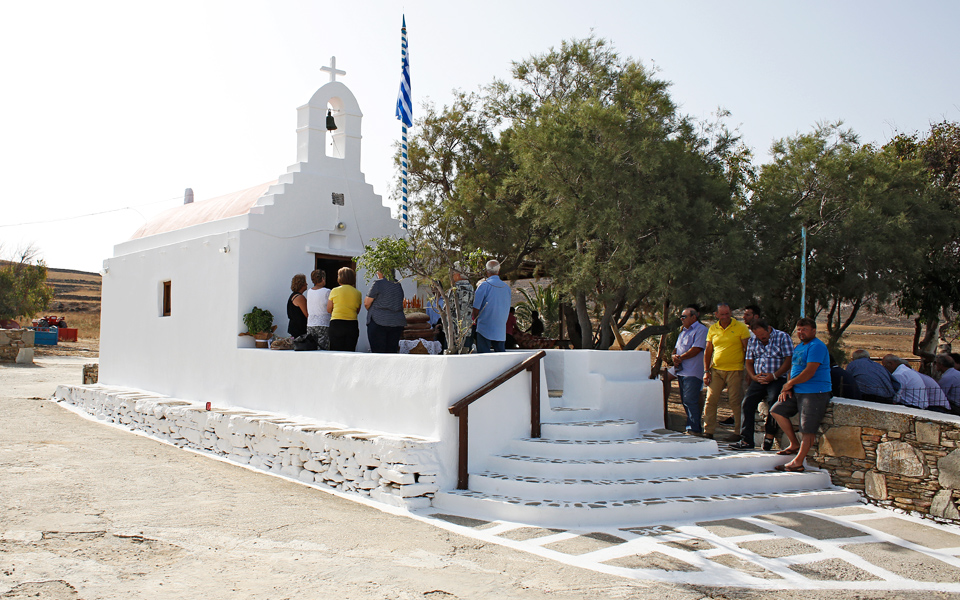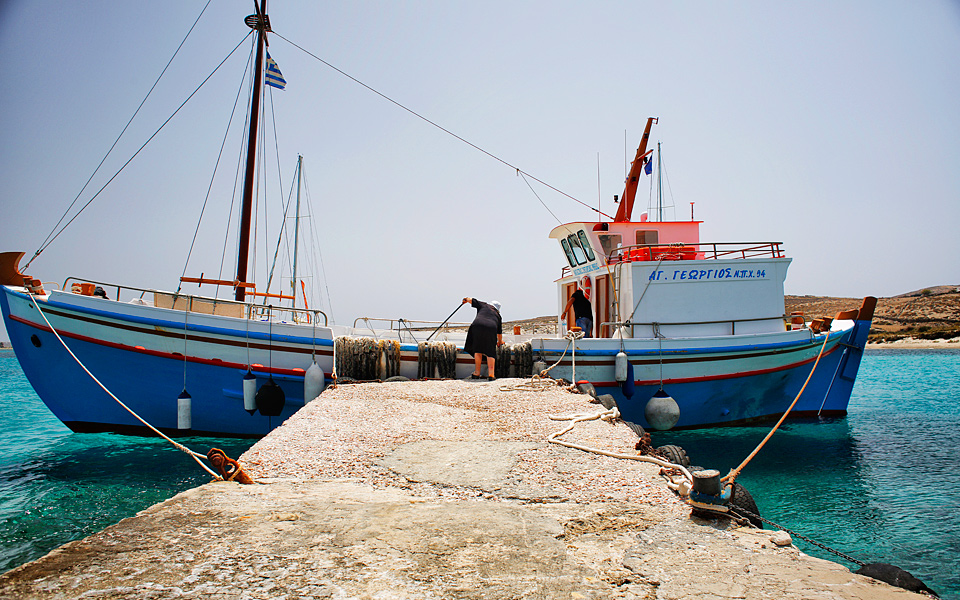The Mykonians may have developed every nook and cranny of their island, but there is one place they still hold sacred – at least for now: Rhenea. This 16 square kilometer islet just 6 nautical miles from Mykonos (and a stone’s throw from Delos), is a protected archaeological site that has not been excavated as extensively as Delos, and has retained its purely agricultural character over the past two centuries.
Many Mykonians rent land on the islet from the municipal authority for a small fee and use it to grow fruits and vegetables, or graze their animals. In the past, the products grown on Rhenea brought in a meager income that ensured the survival of the poorest families. Today the small allotments mostly cover day-to-day household needs, but they are also cultivated by part-time farmers who are involved mainly in tourism and work the land in their free time.
“In the past, the products grown on Rhenea brought in a meager income that ensured the survival of the poorest families. ”

© Nikos Kokkas

© Nikos Kokkas

© Nikos Kokkas

© Nikos Kokkas
Escaping from the “developed town” of Mykonos to the tourism-free island is like taking a journey back in time, according to anthropologist Despina Nazou, who writes:
“We arrived at the port to sail on the caique they call the Ox Ferry… together with a few farmers, a mule and substantial supplies… and good traveling weather, we set off for Rhenea. The people in the caique were talkative as they shared their news… On Rhenea, I was impressed because it had been a long time since I had seen a landscape that had not been built on, where the natural contours of the land weren’t marred by houses. The route we took crossed ‘Apano Diles’ from the east to the west, allowing me to see for the first-time these allotments with their little huts and their small herds. The huts – mostly built of stone – showed their age and the care that had been invested in them by their tenants… The other thing that surprised me was the ‘soundtrack’ to this experience; the bleating of sheep and a few human voices. The comparison between what I felt on Rhenea and what I felt in Mykonos was inevitable and constant. I had a feeling that I had not just traveled through space, but somehow also through time.”











